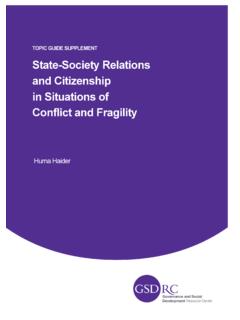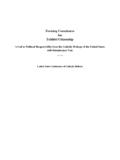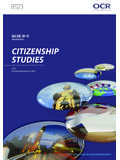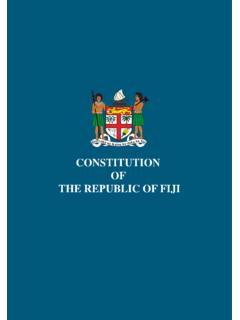Transcription of Continental Integration. Meiji Gakuin University, Tokyo
1 Globalization, citizenship , and Rights to the City: Towards a Sociology of Euro-Asian Continental integration . Iwanaga Shinji, Professor of Sociology and Urban Studies, Department of Sociology, Meiji Gakuin University, Tokyo Keywords: hexis ( ), habitus, civil society , citizenship , globally integrated regions, moral question, the urban, rights to the city, multiple modernities, Continental integration , .. (If a work has been well laid down in outline, to carry it on and complete it in detail may be supposed to be within the capacity of anybody; and in this working out of details Time seems to be a good inventor or at all events coadjutor.)
2 Aristotle, Nicomachean Ethics, 1098a The Contemporary Global Context Throughout the 1980s, and especially from the mid-1980s, Japanese society has been globalized to a much greater extent than previously. However, it has faced even greater challenges following the fall of the Soviet Union and the rise of the European Union during the 1990s and the first decade of this century. In the 1980s, issues of internationalization and local communities were being discussed. Subsequently, globalization issues and the impacts of globalization on local communities and regions became focal topics that continue to be discussed at the beginning of the 21st century.
3 This raises the question of how new relationships, spanning the individual, family, neighborhood, local community, local government, national regions, national government (nation-state), globally integrated regions, and the literally global market, are emerging. In other words, our inquiry focuses on new forms relating to the historical differentiation 1. between the societal community and the polity, and to issues of scale that pertain to the newly globalized civil society . From a juridical-sociological perspective, we could treat issues of citizenship as being linked to fluid, multi-scalar but contradictory spatial practices of appearance.
4 (Arendt 1958). From the turn of the century, the national habitus conceived as a spiritual hexis ( ) (1), the national hexis conceived as a physical habitus (habendi )(2), and the scale of operation of civil society have evidenced rapid change. Rescaling Modes of Regulation, Changing Regimes of Accumulation, and Economic society The nation-state entails three components: civil, political, and social rights. Marshall (1992) has argued that these three components have historically displayed no evolutionary order. We can, therefore, assume that the same situation prevails at the local, regional, national, and global scales in relation to civil society .
5 What is evident is that the nation-state, conceived as a B rgerliche Gesellscaft (a societal community). comprising an economic and civil society is in a state of crisis pertaining to its existence as a socially integrated national community with international associations. Evidently, the rescaling of national modes of regulation (the glocalizing ensembles of institutionalized national compromises) and the changing national-local regimes of accumulation scale, namely globalization as extending the economic society as well as the readjusting mode of regulations in the global, global-regional, national, national- regional, local-urban, and individual (as the front and back regions and the regionalization of personal action that A.)
6 Giddens (2013) has pointed out). On the one hand, the concept of globally integrated regions is emerging as a reality. Examples of scaling up include the European Union (EU), Central European Free Trade Agreement (CEFTA), North American Free Trade Agreement (NAFTA), Free Trade Area of the Americas (FTAA), Association of South-East Asian Nations (ASEAN), Mercado Com n del Sur (MERCOSUR), Asia-Pacific Economic Cooperation (APEC), Asia-Europe Meeting (ASEM), Regional Comprehensive Economic Partnership (RCEP), and Trans- Pacific Strategic Economic Partnership Agreement (TPP).
7 On the other hand, the integrity of a number of nation-states is collapsing as they are being divided up or scaled- down. Examples include the partitioning of civil society in places like Yugoslavia, East Timor, and the Soviet Union, which are now being historically re-divided, while other areas such as Catalonia (Catalunya), Basque (Euskal Herria), Scotland, Flanders (Vlaanderen), Uyghur ( ), Tibet ( ), Hong Kong ( ), and the new regime of Taiwan ( ) are on the rise. 2. The Euro-Asian Continent Conceived as a Globally Integrated Region and as Localities The age of national sovereignty, entailing a perception of the nation-state as a social telos has ended.
8 This is apparent not only in Europe, but also in Asia and in other regions. Nevertheless, the previously established nation-states remain active in all areas of the world. In the age of globalized (and in some cases glocalized) integration (3) in East Asia, including Japan, the concept of a globalized region has been emerging in conjunction with an expanding ASEAN global market. China, Japan, and India, which are extensive economic spheres coexisting within the same region, are being influenced by the extended global market of ASEAN (evidenced by ASEAN+3 (Japan, China, and South Korea), +6 (Japan, China, South Korea, India, Australia, and New Zealand), ASEM, and RCEP).
9 At the same time, they are contending against the Trans-Pacific Partnership (TPP), which is another concept of a globally integrated market that is being imposed by the US and its economic power. Evidently, with the transformation and dismantling of established international relations of existing nation-states, what we are witnessing is a new form of global order entailing globally integrated regions and localities, some of which are aimed at rescaling (in some cases involving extension and in others division). and historically new forms of economic and civil society .
10 Along with the changing contours of the economy and the societal community, we are also witnessing a new habitus and hexis of the societal community and civil society , enabling us to communicate with each other within a given economy and society (4). In our search for new, common spatial practices and their associated geographical territory, we will focus on the Euro-Asian Continental Community (ASEAN ASEAN 3 . RCEP ASEM). Issues within Ukraine are emerging as a result of the eastward extension of European integration against the re-division of the territory of the former Soviet Union.








